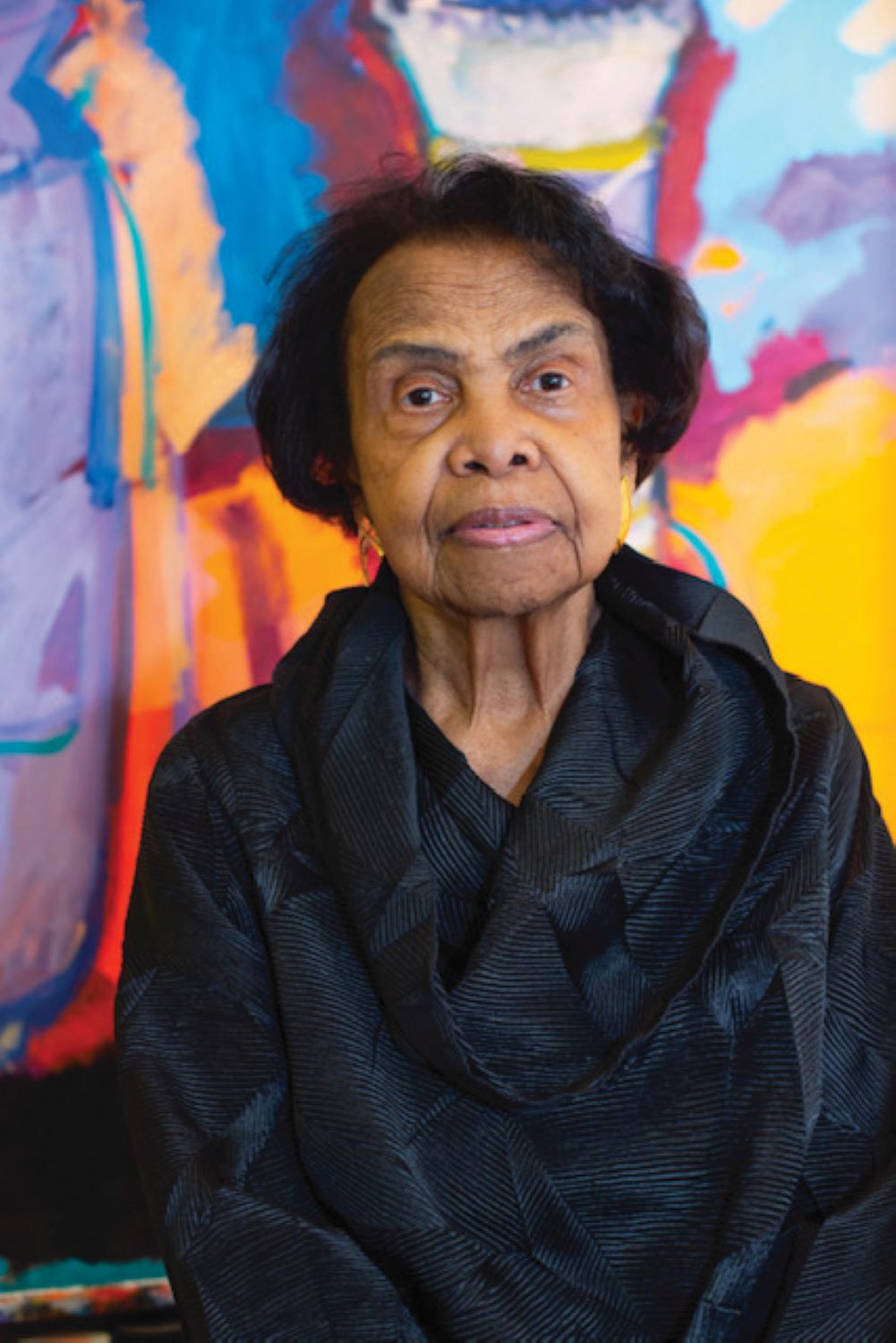IMAGE: Shirley Woodson
Photo Credit: Patrick Barber.
I know Shirley Woodson as one of the matriarchs of art and culture in Detroit. She is a pillar — as a former arts teacher, arts department head, and co-founder and leader of the Michigan chapter of the National Conference of Artists (NCA). Although she wasn’t my teacher directly, she continues to teach me so much. She is someone who has encouraged my children and me as artists. When I had my first exhibit at the NCA Gallery, I asked if I could also feature a piece by my daughter, who was four years old at the time. Shirley said, “That’s a wonderful idea.” I am super grateful for our continued friendship, for her being a role model, and for the following interview that she gave me on Saturday, February 13, 2021.
HC: So what is your first memory of making art?
SW: Well, as a child I was always drawing, and my parents lovingly encouraged me. At one point, one of my mother’s cousins came to live with us, and she was very creative. It was like “icing on the cake” to have another adult to draw and make things with, but I had been doing it on my own for as long as I can remember. I went to a school with a wonderful art program. Back then, DPS was renowned for its excellence in curriculum, and I can remember doing many things that caused me to think. I loved making murals with classmates on long rolls of white paper. Once in early elementary school, our teacher passed us paper plates and asked us to design a place setting. I remember quite vividly happily creating and coloring a plate, napkin, and placemat. It also made me realize that everything in our everyday lives has been designed by someone.
HC: How did you continue your art education?
SW: I went to Chadsey High School, and took art in a classroom that overlooked the treetops. On a clear spring day, I could sit in my seat, sketching, and see all the way across town to the copper roof of a tall, ornate hotel next to Northwestern High School. I also took Saturday classes at the DIA. Then I studied art and art education at Wayne State University.
HC: What about schools has changed?
SW: When I attended Sherril, which was a K-8 Detroit public school, we had two auditoriums. We called one the “little” auditorium and the other one the “big” auditorium. From first grade, “auditorium” was a class where we learned audience decorum as we would listen to instrumental music, or hear a presentation, or poetry. We were on the platoon system where our days rotated. We did not have the same daily schedule. That way, more classes could be taken per semester. We had our core classes, and our arts program included visual arts, instrumental music, literature, as well as home economics, and woodshop. Back then, Detroit Public Schools were seen as a national model for innovative scheduling and outstanding programming. So much has been stripped from Detroiters.
HC: How did your arts organizing start?
SW: Well, when I started out, I thought, “I will just make art to my heart’s content and that’s the end of it.” Then I got introduced to Arts Extended and became so excited about the possibility of sharing with so many artists who were also teachers in the City. Then we opened the Gallery in 1959. Detroit has always been a place where people have the ability to blend, mix, and collaborate. Artists, musicians, writers — many of us were active in several groups and integrated in different ways over time, like Arts Extended and Broadside Press, even if not formally affiliated. I continued in my work, and they continued in theirs, and we would connect and collaborate over time.
One year, my husband and I went to a conference in Chicago. It featured Black artists from around the country and around the world. It was eye-opening and inspirational. While we were there, someone suggested to us that we start a chapter in Detroit. And with others, we co-founded the Michigan Chapter of the National Conference of Artists (NCA). And we have been going strong since. Our chapter has continuously offered summer youth art instruction for the past 15 years. We are a member organization with monthly meetings and presentations, a gallery for exhibitions, workshops, professional development opportunities, and a national network of artists.
HC: What advice do you give to young artists?
SW: Keep moving. Make your way. It may not be a traditional space, concept, or path; but please keep going. It is a lifetime journey. It’s important that you understand your purpose, and build your audience as you go.
When we started our NCA group, we found the harsh exclusion of African American artists from exhibitions and representation at festivals. We decided to establish our own means of building an audience. For several years we drew an international crowd of artists and collectors to downtown Detroit for our fine art fair on Washington Blvd.
HC: What has been the role of artists?
SW: Well, we all have had to pivot in the last year, and I see artists continue to be on the forefront of how to make, collaborate, and exhibit in extremely creative ways. But very generally, everyone follows artists. Development and investment — like in SoHo and Chelsea — follow artists. And the question becomes how we hold space for ourselves. From the late 70s through the 90s, industry fled Detroit. Artists here did not stop. We do not stop.
During Mayor Coleman Young’s era, politically and realistically, we had an administration that promoted the arts in Detroit. There was a robust Arts Council, which mandated a percent for art for new buildings, as well as professional development at many levels for artists in all genres, and the creation of Hart Plaza with works from international artists and festivals that called in all ethnicities. Celebrating, innovating, and bridge-building.
HC: What spaces do you recommend folks check out?
SW: Akoma (Fiber-based art and handcrafted lifestyle items), Art in Motion (Ceramic classes for families), Sherwood Gallery, Jo’s Gallery, Mac’s Gallery, Norwest Gallery, Mack Alive, Eric’s I’ve Been Framed, SIgn6 and, of course, NCA’s Gallery, which right now is open by appointment only. However, we have digital shows up on ncamich.org and on our Instagram account.


